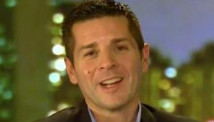If you’ve had a good year, you might be thinking about making some additional charitable donations between now and Dec. 31. That’s great, but if you’re counting on a federal income-tax deduction for your generosity, you’ll need to confirm that the organization you’re considering has been approved by the IRS as a tax-exempt charity eligible to receive deductible donations. Thanks to the ever-expanding wonders of the Internet, you can perform most of the necessary due diligence online using the IRS website. Here’s the scoop.
Charitable Deduction Basics
Everybody knows the Salvation Army and Goodwill are IRS-approved charities. To lock in deductions for donations to such well-known organizations, just be sure to get a written receipt if you donate $ 250 or more, and keep it with your tax records. Make smaller donations by check or credit card, and keep the canceled check or credit-card statement.
But what about donations to slightly more obscure outfits, such as these:
The Colorado Springs Therapeutic Riding Center
Tillers and Toilers Garden Club, of Newark Valley, N.Y.
Second Chance for Pets, of Los Gatos, Calif.
Friends United in Nascar-Racing, of New Market, Minn.
Are donations to these organizations deductible? As it turns out, the first three are indeed IRS-approved and therefore eligible to receive deductible donations. But Friends United in Nascar-Racing lost its IRS-approved status in 2010, so don’t expect any tax break for donating to it.
The Due Diligence Drill
Let’s get specific. To discover which organizations are IRS-approved and which are not, follow this procedure:
Go to IRS.gov. www.irs.gov
Use the search function at the top of the homepage, and enter “Publication 78” in the search field. Publication 78 is the cumulative list of tax-exempt organizations. In the olden days, Publication 78 was a printed document. Now, it’s only available online, where it’s updated about once a month.
Click on the search result titled “Exempt Organizations Select Check.”
Click on the blue “Exempt Organizations Select Check Tool” button.
Select the button for “Are eligible to receive tax-deductible contributions”.
Fill in the blanks to the extent you have the requested information about the charity you’re checking out. The EIN blank is for the organization’s federal tax ID number, which you probably won’t know. But if you know the organization’s name and the city and state where it’s located, that should be enough to find it. Hit the “Search” button.
Scroll down the (probably long) list of charities until youfind the one you’re looking for. By clicking on arrow beside the “Legal Name (Doing Business As)” link at the top of the list, you can make it alphabetical by name of organization. You can also organize the list by city.
Once you find the line for the charity you’re searching for, click on the deductibility status link on the far right. If the status is PC, for example, the organization is a public charity, which is the most common kind. You can make deductible donations of up to 50% of your adjusted gross income to one or more public charities.
What If an OrganizationIs Not on the IRS-Approved List?
Good question. Some churches and church-related organizations may not appear on the list of IRS-approved organizations, because they are not actually required to apply to the IRS for tax-exempt status. That said, many churches apply for and receive IRS-approved status to establish their legitimacy in the eyes of donors.
For other types of organizations, not being on the website’s approved list doesn’t necessarily mean it’s not IRS-approved, but you should be highly skeptical. So do these things.
On the IRS website, go back to the blue Exempt Organizations Select Check Tool bar and select “Were automatically revoked.” Once again, fill in the blanks to the extent you know the requested information about the organization. Hit the “Search” button.
Scroll down the list of outfits that have had their tax-exempt status automatically revoked due to failure to turn in required annual forms to the IRS. If the organization is on the list, you can see the date its tax-exempt status was revoked and the date the revocation was posted on the IRS website. Donations made after the posting date will not be tax-deductible unless the organization has regained tax-exempt status, which is possible. If you’re still interested in making a donation, contact the organization and ask a rep to email you a copy of the IRS letter reinstating its tax-exempt status.
If you don’t find the organization on the automatically revoked list, go back to the page with the big blue “Exempt Organizations Select Check Tool” button. Below the button, find the links to recent revocations and recent suspensions of IRS-approved status. Donations to organizations on these lists will not be deductible.
If you can’t find the organization on the aforementioned revoked or suspended lists, it’s possible that IRS approval was received so recently that the organization simply has not yet been put on the approved list. If you’re still considering a donation, contact the organization and ask a rep to email you a copy of the IRS letter recognizing its tax-exempt status. As a last resort, you can call the IRS at 877-829-5500 and ask them for an updated status report.
The Bottom Line
I think it’s smart to be skeptical about making significant donations to organizations that claim to be tax-exempt charities. Performing the due diligence steps to see if an organization is eligible to receive deductible donations is probably a good idea whether you care about the tax write-off or not. Be careful out there!
More From MarketWatch
Yahoo! Finance – Personal Finance | Taxes
Title Post: Are these donations tax-deductible?
Rating:
100%
based on 99998 ratings.
5 user reviews.
Author:
Thanks for visiting the blog, If any criticism and suggestions please leave a comment


